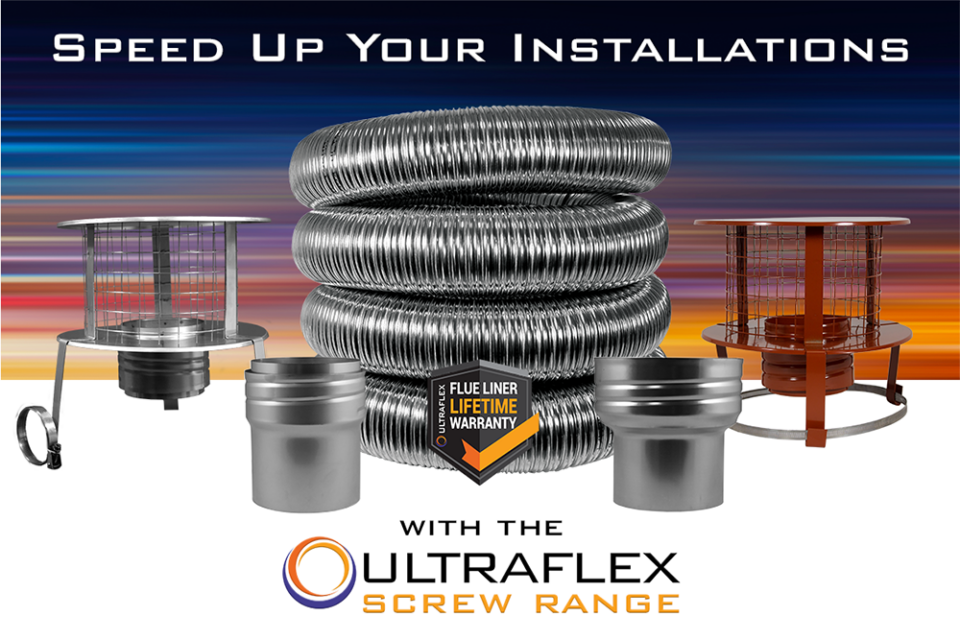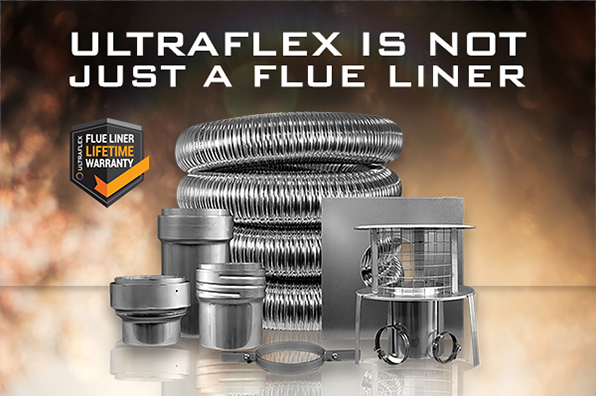
Why Chimney Insulation is Essential for Safety and Efficiency
February 4, 2025
Why a Modern Stove Could Be Healthier for Your Home Than You Think
May 13, 2025Installing a stove involves more than just choosing your favourite design. Ensuring that all components are in the right place is crucial for efficiency and safety. One of the most important elements in this setup is the flue liner. If you’re wondering what a flue liner is and whether you need one, we’re here to help.
What is a Flue Liner?
A flue liner, also known as a chimney liner, is a flexible tube that connects to your stove pipe and runs up the entire length of your chimney. Instead of allowing fumes to escape into the chimney cavity, a flue liner safely directs them out of your home.
Before using your chimney for the first time, it’s essential to have it inspected by a professional. A chimney sweep or stove installer will check for any existing liner and assess whether it’s in good condition.
The Purpose of a Flue Liner
A flue liner serves multiple essential functions, including:
• Increasing efficiency
• Keeping your chimney clean
• Enhancing safety
Old unlined chimneys tend to be cold, making it difficult for hot smoke to rise properly. This can cause condensation, which may lead to dampness and creosote build-up. Creosote is highly flammable and can create blockages, increasing the risk of chimney fires. Additionally, a flue liner helps prevent dangerous carbon monoxide leaks by sealing any cracks in your chimney.
While not mandatory, most stove installers strongly recommend using a flue liner for optimal performance. It helps improve the draw, reduces drafts, and makes lighting and maintaining a fire much easier.
What Type of Flue Liner Do You Need?
In the past, chimneys were lined with clay, but today, flexible steel liners are the standard choice. When selecting a flue liner for your solid fuel stove, ensure you choose the correct type:
• 316 grade – A more affordable option suitable for burning seasoned wood only.
• 904 grade – A higher-grade liner that is more durable and recommended if you plan to burn coal frequently.
What if You Don’t Have an Existing Chimney?
If your home or installation location lacks an existing chimney stack, a twin wall flue pipe is the best solution. These double walled flues are suitable for the creation of both indoor and outdoor flues and they can be used to pass through roofs and floors. Twin wall flues allow you to install a stove in garden buildings, conservatories, and even houseboats.
Need Expert Advice?
Choosing the right flue liner can make a significant difference in your stove’s performance and longevity. If you need guidance in selecting the best chimney liner for your needs, feel free to contact us at 0344 800 6586. Our team is available Monday to Friday from 9am to 5pm and will be happy to assist you.




